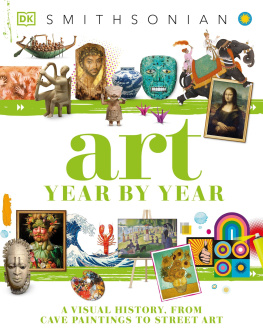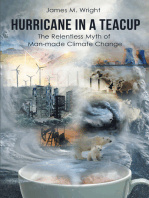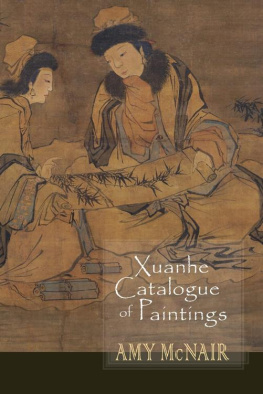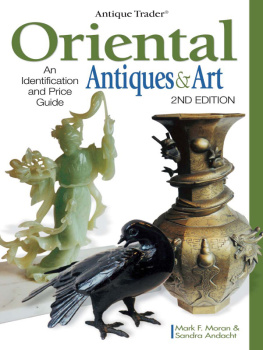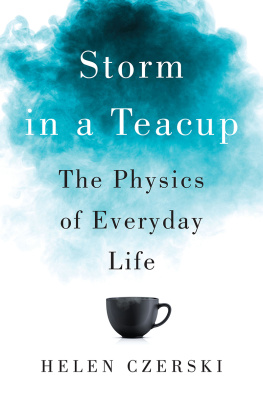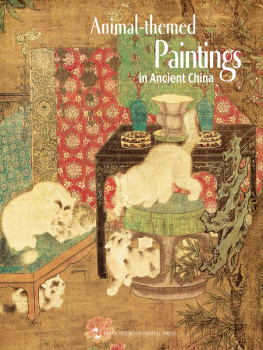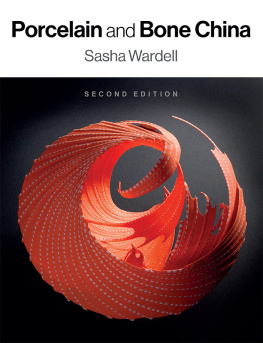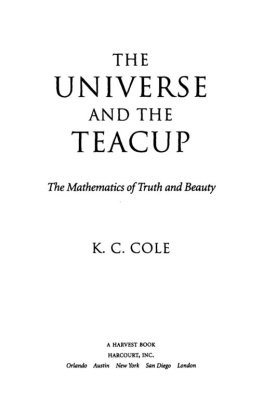

For my mother and her love of art and tea.

Introduction and artwork copyright 2015 by Molly Hatch.
The Art of Procuring Porcelain copyright 2015 by Kathleen Morris.
All rights reserved. No part of this book may be reproduced in any form
without written permission from the publisher.
Library of Congress Cataloging-in-Publication Data available.
ISBN: 978-1-4521-3433-8 (hc)
ISBN: 978-1-4521-3975-3 (epub, mobi)
Book design by Kristen Hewitt
Chronicle Books LLC
680 Second Street
San Francisco, CA 94107
www.chroniclebooks.com
INTRODUCTION

By Molly Hatch
Everyone has a favorite cup or mug. It fits nicely in your hand, it holds exactly the right amount of liquidit is as though it were made just for you.
Cups are such a consistent part of our everyday life. They sit unassuming, waiting to be used, washed, and used again. But there is a moment in which we focus on the cups in our cabinets more than at most any other moment: when we pause to contemplate which cup to use. It is in that moment we consider the cup. When I go to my cabinet each morning to choose a cup for my coffee, I am often tickled by how a cup can spark a memory of the potter who made it and the story behind how I acquired it. The subtleties of these cups I have collected have been revealed to me slowly, through the intimacy of using them over time.
The act of making this book is in many ways an effort to consider our relationship to the cup. What history does a teacup hold?
Like the cups in my cabinet, there is a story behind each of the cups I have illustrated in this book. I took on this project in an effort to learn from these cupsnot knowing what exactly the lessons would be. I found myself imagining stories of their histories as I painted their portraits. What are the stories of the artisans who painted them? Who first bought each cup and what was its journey over the past two hundred years, from leaving the factory to arriving in the collection of Francine and Sterling Clark? If only these cups could talk! The stories they would tell!
It felt like fate the first time I visited the archives of the Clark Art Institute in Williamstown, Massachusetts, in 2011 to see this cup collection. I arrived with little knowledge of the breadth of the collection, and left with my mind spinning with possibilities for working with them. That day, I was lucky to be able to put on a pair of white gloves and handle the cups, turning them over to reveal a whole world of signatures and coded acquisition labeling, even stamps from antiques dealers with notes written on them.
The cups, some made as early as 1730, display an exquisite range of porcelain. The majority are from European and Asian factories, making for a lovely visual survey of the styles of their times. The level of detail in the craftsmanship and the extensive use of gold are reflective of the opulence and wealth of the royalty and aristocracy whom these objects were made for. To be able to hold a cup in my hands that could have once been used by royalty was extraordinary.
I took photos of all sides of 30 of the 270 cups in the collection with the help of curator Kathleen Morriswho asked during my visit what I planned to do with the images. I had no idea what I was going to do at that time, but it was clear that something special was going to come of the visit.
I went back to my pottery studio and spent several months looking at the photos I had taken and began sketching in sketchbooks. That spring, I read an article in Selvedge magazine describing a hand-drawn catalog of the archives at the Nordic Museum in Stockholm, Sweden. The article outlined how a curator at the Nordic Museum spent the majority of her career at the museum during the early twentieth century systematically hand-painting a portrait of every piece in their archives as a way to visually document their collection.
.
The cups represented in the pages of this book were made to be collected and to be coveted. I have spent countless hours contemplating, studying, and falling head over heels in love with them. While there are so many more cups in the Clark that could have been illustrated here, I have painted what attracted me the mostadding my own chapter to their history. I came to this project as a studio potter with a love of history, surface design, and pattern. This way of working in a continuumreflecting history in a contemporary artworkhas already influenced my work, and will continue to. Through the close observation in the process of painting each of these cups, I have in a way acquired them. The paintings in this book create a whole new cup collection, happily one that I can share with you. I hope as a reader you contemplate and you covet and you fall in love with these cups just as I have.
THE ART OF PROCURING PORCELAIN

By Kathleen Morris
The Clark Art Institute in Williamstown, Massachusetts, is renowned for its collection of impressionist paintings, but it contains other strengths, including a fascinating and idiosyncratic collection of European porcelain. This material is not well known, even among specialists, and has barely been published. The overall profile of the collection still bears the distinctive taste of the museums cofounder Sterling Clark, whose interest in porcelain led him to acquire hundreds of piecesthe great majority of which take the form of individual cups and saucers. The sheer number of examples in the collectionsome 270, most from the mid-eighteenth to early nineteenth centuryoffers a rare opportunity to explore the vast range of design and decoration options afforded by this basic form. By necessity, only a portion of the collection can be displayed in the galleries at any given time. A visit to storage unveils the balance: shelf after shelf of cups and saucers, in joyful juxtaposition. Like a tour of those storage shelves, this illustrated catalogue provides tantalizing glimpses of the breadth of the collection and celebrates its diverse beauty and intrigue.
Painter Molly Hatchs proposal to create new work inspired by the Clarks collection of cups and saucers came at a serendipitous moment: we had just begun to plan for the reinstallation of the decorative arts collections as part of a major expansion and renovation project, and were beginning an intensive study of the These parallel projectsone artistic and one scholarlyboth entailed scrutiny of a kind that is deeply rewarding.
Sterling Clark was born to great wealth in 1877, one of the heirs of the Singer sewing machine fortune via his grandfather Edward Clark, who had been Isaac Singers business partner. Following an education at Yale, a stint in the army, and a scientific expedition through northern China, Clark changed course in the 1910s, settling in Paris and marrying a retired actress of the Comdie-Franaise, Francine Clary. Clark began collecting art, a passion shared by Francine, and made it his lifes work, eventually founding and building the art institute in Williamstown that bears their names. With reliance on Francines discerning eye for second opinions, Clark assembled an astonishingly strong collection of paintingsparticularly Italian Renaissance, nineteenth-century French with an emphasis on the impressionists such as Pierre-Auguste Renoir, Claude Monet, and Edgar Degas, and works by certain nineteenth-century American painters including Winslow Homer and John Singer Sargent. In addition, he collected master drawings, British and Continental silver, and European and Asian porcelain.
Next page


